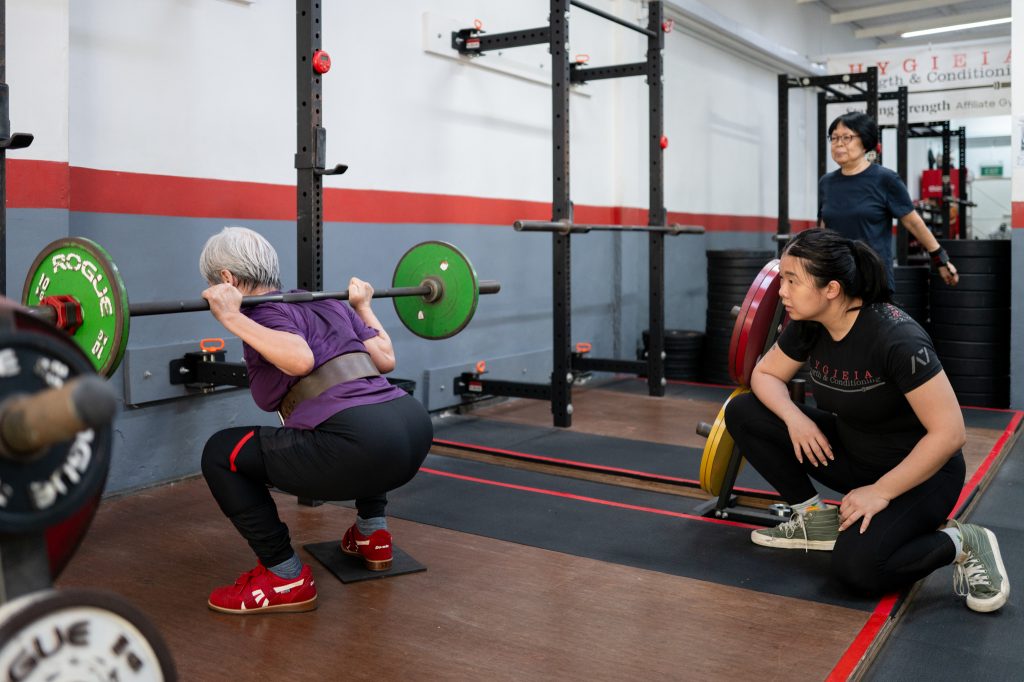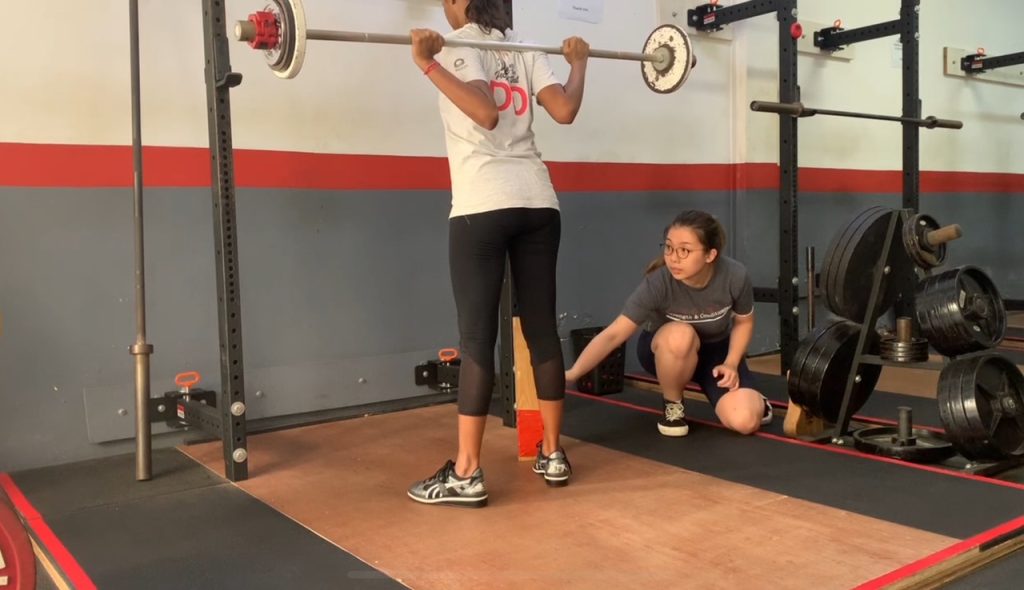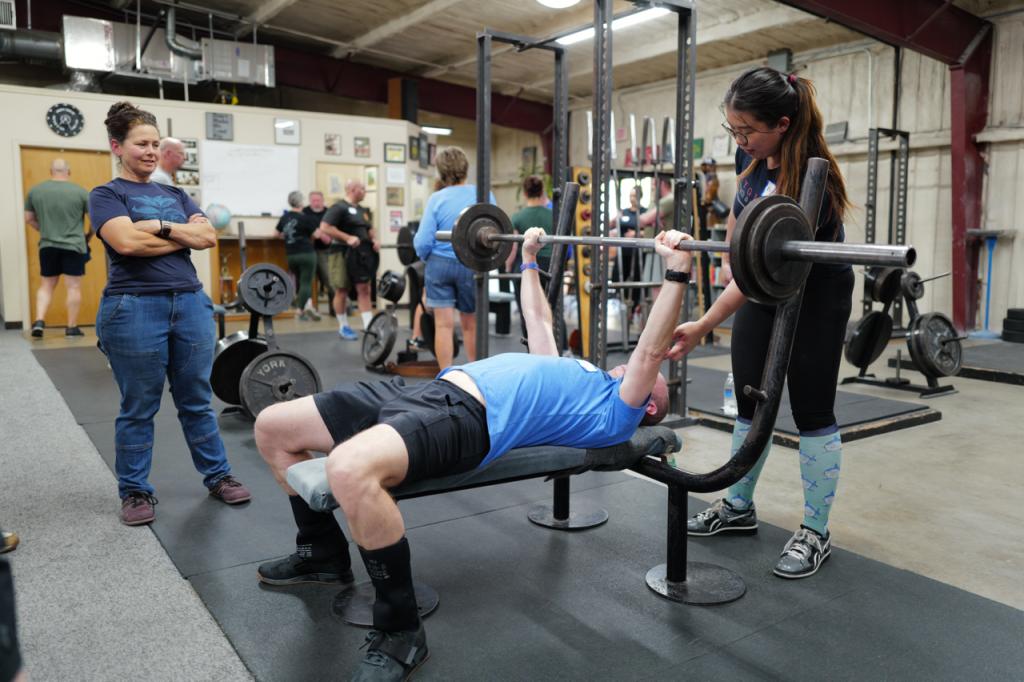
My Previous Life
I spent my entire past working life in restaurants before ever stepping under a barbell. As a young and passionate industry professional, I seized every opportunity to broaden my skills — from fine dining to cafés, kitchen to front-of-house, food to wine. You name it, I probably dabbled in it. I loved the highs: the adrenaline of busy dinner services, the deep camaraderie with teammates who just “got it,” and the joy of serving guests who appreciated great food and service. I’ll proudly toot my own horn — I was always a stronger hire than your average Joe.

Working at a private event, one of many
But the highs came at a cost. Over time, the long hours, poor treatment, toxic bosses, low pay, and even harassment began to wear me down. My passion for the industry dwindled. For years, I toyed with the idea of leaving, only to be lured back by another “exciting opportunity” offering a meagre $200 more a month to do the same job.
Fortunately, I made one good decision during my last full-time role: I started training at Hygieia while still working. If I couldn’t control the job’s demands, I could at least take charge of my health. Strength training helped me cope with the physical toll of 12- to 14-hour shifts, but I was still the same overworked camel buckling under an ever-growing load, powered by the mere delusion that one day I will perhaps be paid fairly for my talents in hospitality.
Taking a Stab in the Dark
The last straw that broke my back came less than four months into my new job — a restaurant client behaved inappropriately toward me. That one incident sparked a series of conversations with my coach at the time, Shaun.
“I don’t want to work in restaurants anymore,” I told him. “Maybe I should study something and start over. Nutrition? Physical therapy?”
“We’re looking for a female coach, have you ever thought about coaching?” he asked.
Honestly, in today’s world, everyone seems to be a coach, therapist, or trainer. I thought, if they can do it, maybe I can too! Besides, I’d survived hell’s kitchen more than once — surely I was tough enough for this whole coaching thing. How hard can it get?
Shaun suggested I read the Starting Strength website about coaching before giving him a final answer. In hindsight, the amount of research I actually did doesn’t matter, because nothing could have prepared me for what was about to become the turning point of my life.
Learning the 101s from Ground Zero
To become a full-time coach at Hygieia, I had to meet the most important requirement: earning the Starting Strength Coach (SSC) certification. That meant starting as an apprentice while preparing for the seminar and oral board evaluation process. More on these two events later.
I quit my full-time job. I was in everyday to observe every coached session, trying to make sense of every detail in a lifter’s movement under the bar. At the same time, I was buried in three core texts — Starting Strength: Basic Barbell Training (aka the Blue Book), Practical Programming, and The Barbell Prescription. To deepen my understanding, I enrolled in the Starting Strength Coach Prep Course, completing 23 modules of written and coaching assignments that go through the model’s core principals of anatomy, physiology, biomechanics, and programming. And, of course, I had to accumulate experience as a lifter and write my own training program. At this stage, I hadn’t even completed a full run of novice linear progression. I was a complete greenhorn both as a lifter and a coach — I knew next to nothing, but was foolishly fearless as I was armed with blind confidence from my previous career.
Once I began coaching as an apprentice, I quickly felt out of my depth — like the rug had been pulled out from under me. It became clear that this wasn’t just about lifting or giving cues; it was a learning process on par with a master’s degree, requiring a deep, working understanding of the method behind the training. There was nowhere to hide behind — you either knew it or you didn’t. Over the months I made slow progress through the books and modules, all while delivering coaching that, in hindsight, was rough and low-quality. “Maybe this is not for me after all,” I often thought to myself and considered quitting many times.

Coaching my first client, Jaya
The Real Turning Point
A whole year as an apprentice passed and I flew to Texas for my first seminar. For those who don’t know, the seminar held at Wichita Falls Athletic Club is an intensive 3-day course for lifters and coaches. Most people would participate to have a better understanding of the method, usually enough to mitigate their own form errors and to improve self-programming to some extent.
For hopeful coaches, though, it’s not a learning experience — it’s an evaluation. You’re there to be tested on the platform and identified as someone capable of coaching all five lifts. If you pass, you join the 12% who make it through the platform evaluation.
It was, without question, the most stressful event of my life — more intense than any high-stakes dinner service I’d ever worked. Unsurprisingly, I failed while coaching the squat. The lifter assigned to me struggled to grasp the concept of hip drive, I was too nervous to stay in focus, and I lost control of the session. I did reasonably well on the remaining lifts, but my performance spoke for itself — there was still a lot of work to be done..
I returned to Singapore feeling dejected and embarrassed, convinced I had let everyone down. But to my surprise, those around me were nothing but encouraging. “You’ll pass on the next attempt,” many of them said with complete confidence.
It was then that I had an epiphany: I was in an environment where people genuinely cared about each other’s progress. The coaches are high caliber individuals, I get to work manageable hours, taking full control of my own wellbeing through strength — and growing stronger alongside my clients. And so the despair faded as I pushed the negative thoughts aside to set my focus on preparing for the next attempt. There was truly no time to wallow!
Finally Getting Certified
If it weren’t for Shaun and Marvin’s persistent scrutiny and high standards — and the hours they sacrificed to ensure I understood everything — you wouldn’t be reading this. They clearly cared about my success more than I even realized. So, we doubled down on coaching practice and academic prep.
I actively sought out anyone with no barbell experience who’d let me coach them. With each session, my confidence grew. I revised the material whenever I had free time, listening to the audiobooks until I was nearly sick of Rippetoe’s voice (yes, he narrates the books). If it helped me retain and reinforce the knowledge, I tried it.

April 2024 Seminar
Thankfully, I passed my platform evaluation on my second attempt in April 2024. In July, I earned my certification after passing the oral board — a gruelling two-hour interview with a panel of SSCs, where I had to demonstrate deep understanding of the model and its principles.
Reflections, One Year On
It still feels like a big deal to me. Sometimes I still catch myself in disbelief that I actually did all the work, flew there, came back certified, and now a full-time SSC working with amazing people all the time.
This journey has made me a more patient, thoughtful, and empathetic person. It’s challenged the way I see the world, taught me to value time, effort, commitment, and hardship — and to reject complacency. Surely you know how we advocate for strength training not just for physical health, but because going through something hard builds resilience and character. Becoming an SSC shares similar traits like that, except it’s a deeply humbling process of growth amplified many times over.
In my opinion, the greatest career lottery is doing work that not only defines you positively as a human being, but is also genuinely enjoyable and beneficial on a personal level for both yourself and the people around you. I can’t relive the experience of getting certified, just like you can’t watch your favourite movie again for the first time. But I’m certain that the pre-barbell version of me — even knowing exactly what was ahead — would still choose to take this path, except she might need to read the blue book twice before saying yes.

